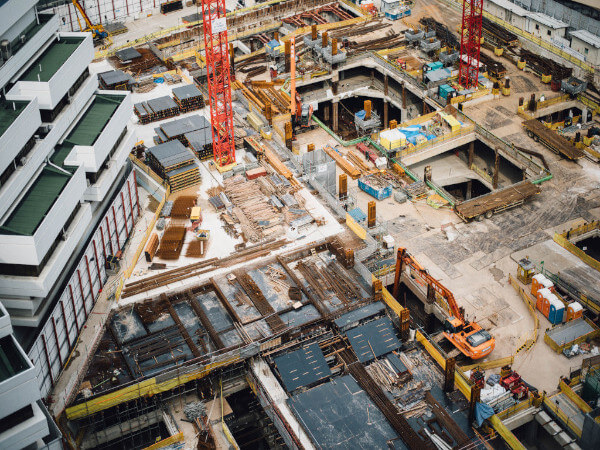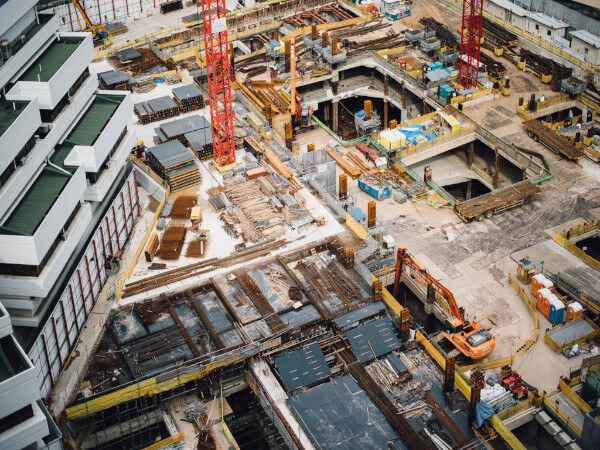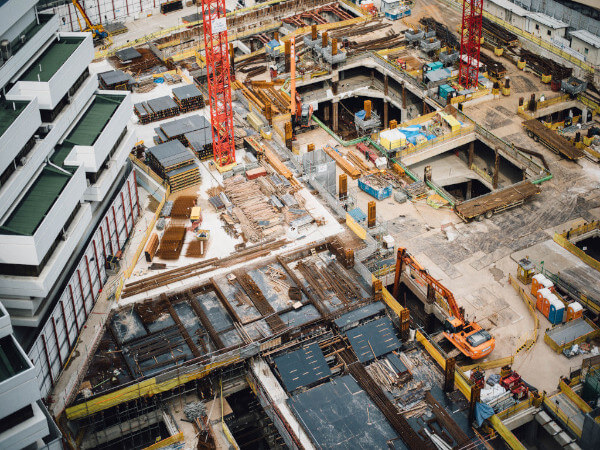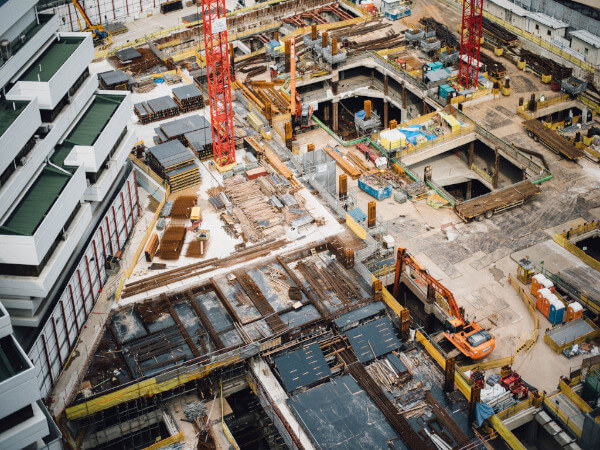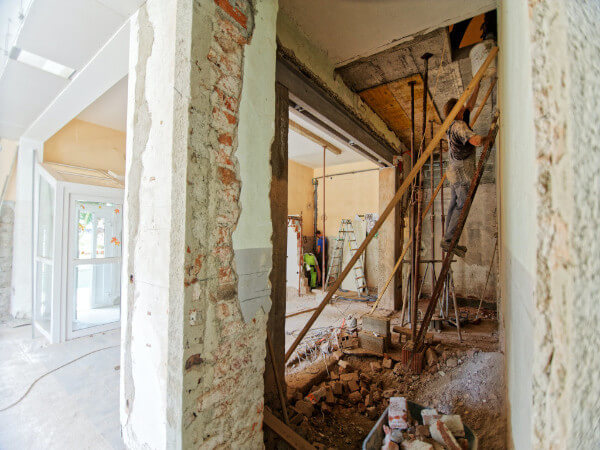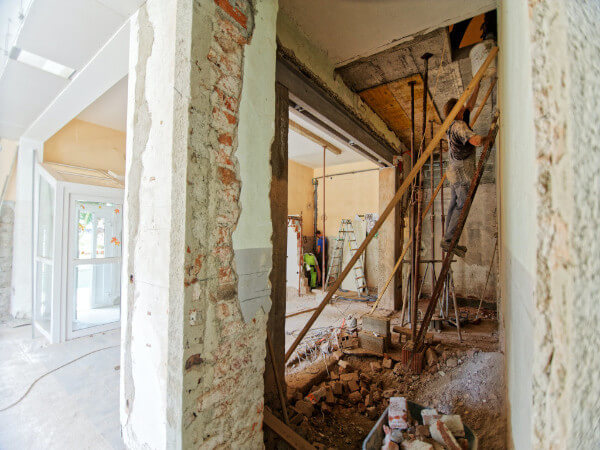
One of the keys to effective technology adoption is a strong partnership with your tech provider. While the quality of technology is certainly important, you should also consider that company’s commitment to ensuring your success.
At the end of the day, successful technological deployment goes beyond savviness. It hinges on the strength of your relationships with your technology vendors and the quality of those partnerships. No one knows this better than Daniel Charest, Project Executive at J. Calnan & Associates. As someone who’s been working in the construction management realm for over 20 years, Daniel knows firsthand how essential technology partners are. Specifically, how having the right tech partner helps ensures the firm’s long-term success.
We recently caught up with Daniel and chatted about his journey to becoming a Project Executive. Check out what he has to say below.
Tell us a little bit about J.Calnan and Associates and what you specialize in.
Calnan and Associates (JC&A) is a New England-based firm that provides construction management services. We’ve been around for over two decades now, and we’re celebrating our 25th anniversary in September. We’re in the commercial construction business and our primary focus is in the corporate and the life science marketplaces. We’re fortunate to be well-seeded for a lot of new opportunities in our 25th year.
Walk us through your career. What led you to becoming Project Executive?
I graduated from Wentworth Institute of Technology in 2003 with a degree in Construction Management.
Over the course of my time there, I had co-opped at a couple of different construction companies, but predominantly at a firm that’s no longer around. And while I was there, I got to meet some really awesome individuals. I met my boss and mentor, Steve Robak, along with some others who are also here at JC&A. So, I’ve been working with Steve now for 20 plus years, and I’ve been at JC&A for nearly 17 years.
Steve and I work well together. He is Executive Vice President and Partner at JC&A and an excellent leader and guide. He’s helped me find some really awesome opportunities within the organization. Many of these opportunities challenged me as a young construction professional to set up and help add detail and focus to the then-young JC&A. One of these areas include the formation of our Technology Committee and later focus groups like our PlanGrid Build team that help train and leverage the power of technology across the organization.
I started at JC&A as an Assistant Project Manager then worked my way up to Project Manager, two to three years in. From there, I moved up to Senior Project Manager for a while. I’m now a Project Executive, and I’ve had this role for over five years with many successful projects including Bioverativ and Olympus SSA, Lifoam, Smith & Nephew and two major robotics projects in the metro Boston area; most notably Boston Dynamics new Headquarters in Waltham, MA.
s construction evolves, how do you see the role of Project Executive changing?
The way we work and function today is a little bit different than when I first got into the role. When I started as Project Executive, I was transitioning from being a senior PM and still doing a lot of that project management function. I still act in this function today, and have the ability to shift between the various ends of the PX role as the projects and client needs call for, which keeps my day interesting. I enjoy the nimbleness and the autonomy of my role, so compared to others, I might be considered more hands-on.
One of the projects that I’m gearing up for right now is our largest job ever. It’s a core shell life science building that is currently scheduled for completion in the latter half of 2023. We’re also working with some large, well-known household brands and retailers in developing their portfolio around the Metro-Boston area. All of these projects offer many new challenges for JC&A and my role as a PX to adapt our project teams to a larger project mindset for these opportunities. Everyday is truly a new day, which helps keep things interesting for sure.
A common denominator across all these projects is they are very, very demanding. So, I see the role of the Project Executive as one that’s sitting at the intersection of the client and subcontractor relationships. On any day, within minutes, I have the chance to speak with great people representing both sides of the project team. It’s a really fascinating dynamic.
And at the same time, it’s also about saying, “Hey, we’ve got this really cool project. What can we do, as we’re building it, to make ourselves better?”
That’s the mindset that I’ve been working with and continuing to build on. To succeed in this role, we shouldn’t take anything for granted, and we shouldn’t keep doing things just because that’s the way they’ve always been done. We need to strive for continuous improvement.
What project are you most proud of working on in your career? Why?
A number of projects come to mind. I often go back to our first PlanGrid project, which was the Schneider Electric Headquarters. That was a project where I was a senior Project Manager all the way through the entire duration of the project.. That said, I was often acting as a Project Executive, but I didn’t really realize that until I came out of it and looked back. It was our largest project at the time and it’s very cool to have on our resume.
“I was often acting as a Project Executive, but I didn’t really realize that until I came out of out it and looked back.” —Daniel Charest, JC&A
Since then, I’ve faced similar, yet different challenges. We had a national brand hotel project that we’ve built. Upon completing, I moved to the Project Executive role.
I’ve also had a couple of other sizable jobs, some interior fit-outs, but most notably of late was a large robotics client doing the core-shell portion for their headquarters, while another team from our company did the fit-out portion. That one is currently wrapping up over the next month or so.
Another important one is the fore mentioned Boston Dynamics headquarters. That’s my favorite job in recent history. I actually led the team that won that project! We went aggressively into the interview, and our team’s humble approach to the prospective opportunity was the client’s deciding factor in allowing us to earn the work and their trust.
What are the biggest challenges you face in your role? How does technology help you overcome those challenges?
One of the biggest challenges that we struggle with as an industry is communication. And I think the strain that COVID-19 put on our industry provided a unique opportunity for us to embrace technology and enhance our communication practices as time goes on in the JC&A organisation and industry as a whole.
That could be in the form of a Zoom call, or in our case, Microsoft Teams. We actually started implementing Teams even when nobody had a major vision for it yet. I started using many elements of Teams and the larger benefits of Microsoft 365 before COVID, with decent success, but it was difficult to see what would be needed to help change the mindset around communication protocols. Then COVID hit, and we were able to figure out pretty quickly how we could use the technology. I had people coming up to me from our IT department, and going, “Man, I’m glad you were pushing Teams out when we did because we were ready for the pandemic.” We literally discussed over the phone some quick steps to make sure all teammates could use Teams and away we went!
It was a tough period, but we’re definitely much better because of it. Aside from learning to communicate more effectively, our team became stronger working together in a different media. People learned to support one another and realized that we didn’t have to be in the same room to be there for each other. They even realized their desk line also rang their Teams line too!
When you think about the future, what are your plans to advance innovation and productivity at J. Calnan and Associates?
We’re doing a number of things with photogrammetry right now. We’re exploring it. Our feet are pretty wet in the drone world, as well. We’ve got a couple different drone types and we’ve been working with DroneDeploy. We’re really using that as the broker of the photo data, and rolling that out on some of our larger projects for cost efficiency. We’ve also done some things with HoloBuilder and Structionsite to name a few.
“It’s really exciting to have these nimble tools all in one place.” —Daniel Charest, JC&A
We’re currently using Autodesk Build on a number of projects. It’s still early days, but we’re looking forward to new features and other things in store for the software. Right now, I really like Meeting Minutes in Autodesk Build, as well as some of the insights dashboard features. It’s really exciting to have these nimble tools, all in one, place and function in a way that is easy for our team to learn these modern software.
All that being said, when it comes to technology adoption, it’s always a beta test for us. We’ll try anything. There are enough young people here in the company that we can talk to—they say, “Hey, this is the next best thing.”
We’ve had some new hires that have experienced other construction management solutions. But they look at PlanGrid and they’re like, “Wow, this is a lot better product.”
It’s clear that Autodesk is leading the way and we’re proud to work so closely with your team. I think it’s important to drive home how long we’ve been partners with the folks at PlanGrid. We started working with PlanGrid when it had fewer than 20 people, and we’ve been with the company ever since.
A colleague of mine and I both stumbled upon it when we had the iPad and we’re like, “What can we do with this? There’s got to be something we can do with this.” Going through the app store, we found PlanGrid and we said, “Let’s give this a try.”
What advice would you give to the next generation of men and women entering and preparing for the future of the industry?
Don’t be embarrassed or ever give yourself a second thought about asking a question. Whatever the question is, just ask it.
“Don’t be embarassed… Whatever the question is, just ask it.” —Daniel Charest, JC&A
You used to hear teachers say there was never a dumb question, and there really isn’t. Just question and clarify, and make sure you have a clear understanding of something. Make sure you understand what the expectation is, etc. That’s the best way to learn.
The post Behind the Build: Interview with Daniel Charest, Project Executive, J. Calnan & Associates appeared first on Digital Builder.


